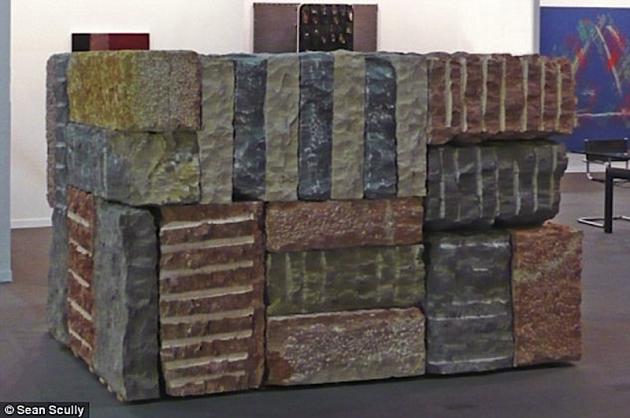The commissioning of a million dollar sculpture by the abstract painter Sean Scully, for the United States’ new London embassy has caused an outcry from cost cutters in the State Department. The project managers have responded by saying that it was “a good use of our limited resources” but have come up against negative comments in the conservative press. The work of art was bought as part of the ‘Art in Embassies’ program which places important works of art in and around government buildings abroad. It is set to grace new complex when it opens in 2017.
Spokes person Marie Harf of the State department said, “This piece was purchased under the market price after considerable negotiation with both the artist and the gallery. This is an important part of our diplomatic presence overseas,” Scully who lives in New York became an American citizen in 1983. His work is found in numerous public and private collections. He was twice nominated for the Turner Prize and recently became a Royal Academician.
The Art in Embassies program had “played a leading role in US public diplomacy” for the past 50 years, Harf said. “Where we can promote cross-cultural understanding… we think that’s a good use of our limited resources,” Harf told journalists. The State Department requested some $2.5 million for the 2013 program which is a public-private partnership involving 20,000 participants including artists, galleries and museums. Separately, the daily Washington Times accused the diplomatic service of embarking on a September spending spree to buy $180,000 of alcohol for its embassies. The splurge came just as the US fiscal year was ending and a government shutdown began. But Harf denied the State Department had been trying to use up its money before the end of the fiscal year, saying budget wrangling in Congress had held up its 2013 funds.
Sean Scully is known for rich, painterly abstractions in which stripes or blocks of layered color are a prevailing motif. The delineated geometry of his work provides structure for an expressive, physical rendering of color, light, and texture. Scully’s simplification of his compositions and use of repetitive forms—squares, rectangles, bands—echoes architectural motifs (doors, windows, walls) and in this way appeals to a universal understanding and temporal navigation of the picture plane. However, the intimacy of Scully’s process, in which he layers and manipulates paint with varying brushstrokes and sensibilities, results in a highly sensual and tactile materiality. His colors and their interactions, often subtly harmonized, elicit profound emotional associations. Scully does not shy away from Romantic ideals and the potential for personal revelation. He strives to combine, as he has said, “intimacy with monumentality.”
Landscape and location have always played an important role in Scully’s working process, and he often titles his works with reference to where they were painted, as with the ongoing series Wall of Light. Greatly impacted by trips to Morocco, Mexico, Australia, and France, Scully finds inspiration in the light and colors inherent to specific places. He currently spends his time between Barcelona, New York, and the Bavarian countryside south of Munich, Germany. He has said that the latter, with its winter-time palette of multi-hued grays and whites, has led to a softening, almost metaphysical approach to his work; the tonality of the eight-part horizontal painting Night and Day, 2012, is an apt example. John Yau, in his essay for the catalogue, also cites the traumatised landscape of Scully’s Irish homeland, its physical scars from the Great Potato Famine cutting visible lines in the hills. In this vein, Scully’s 2013 series, Landline, offers not grid-like blocks, but muscular bands of rhythmic, sometimes dramatic, colour.

